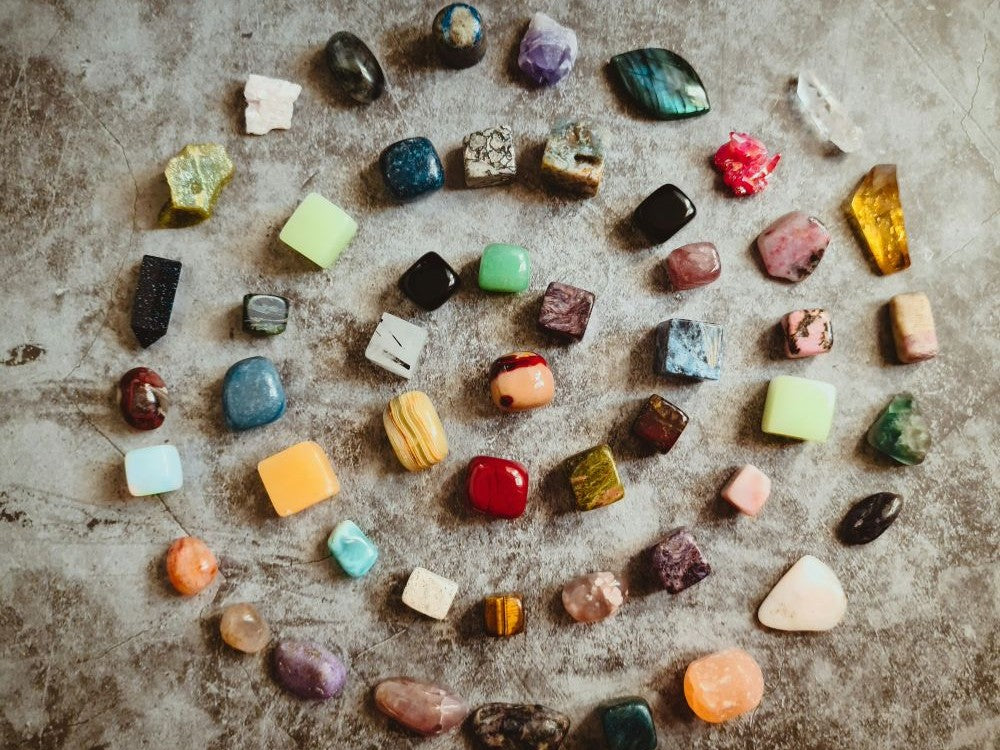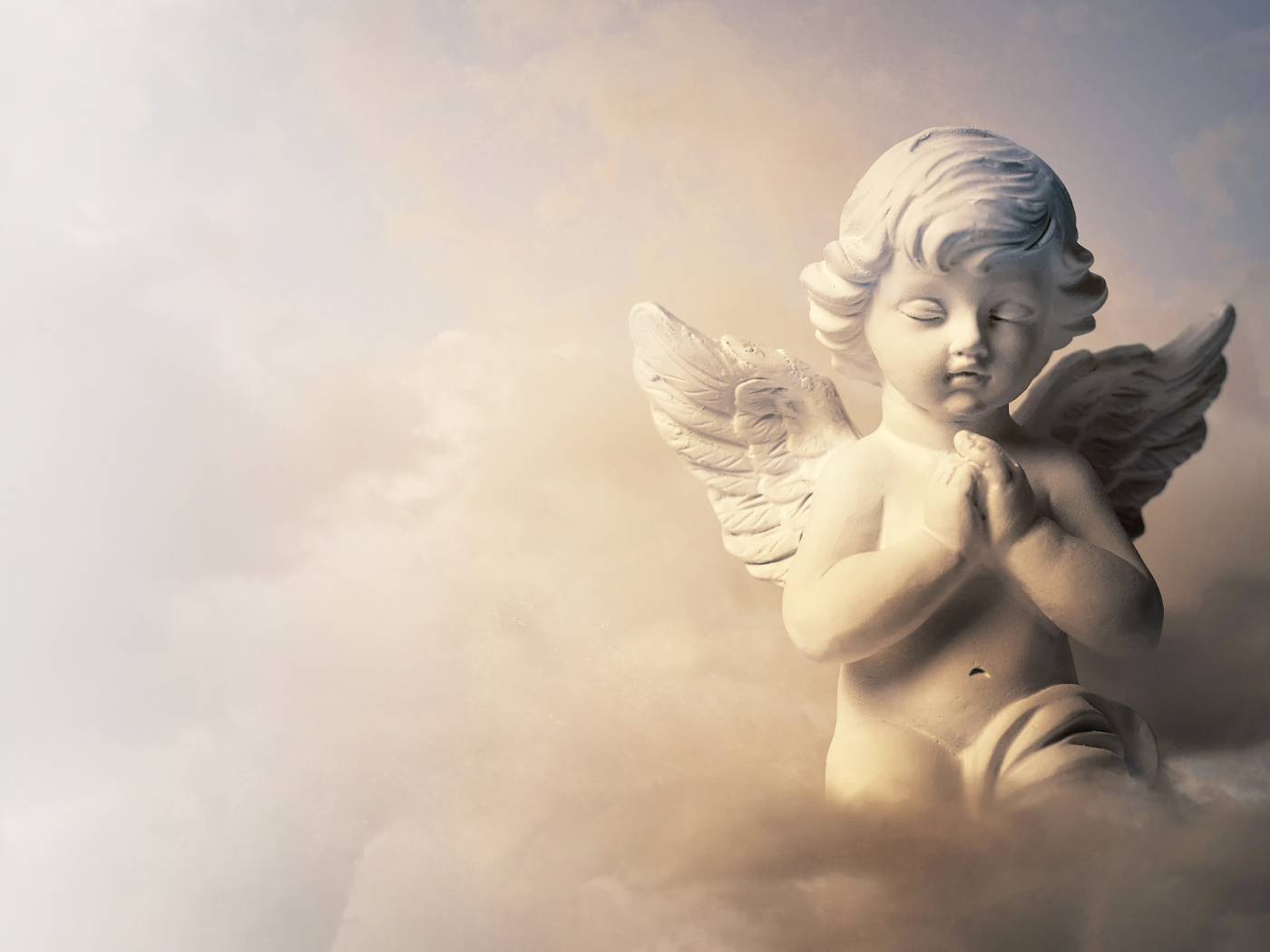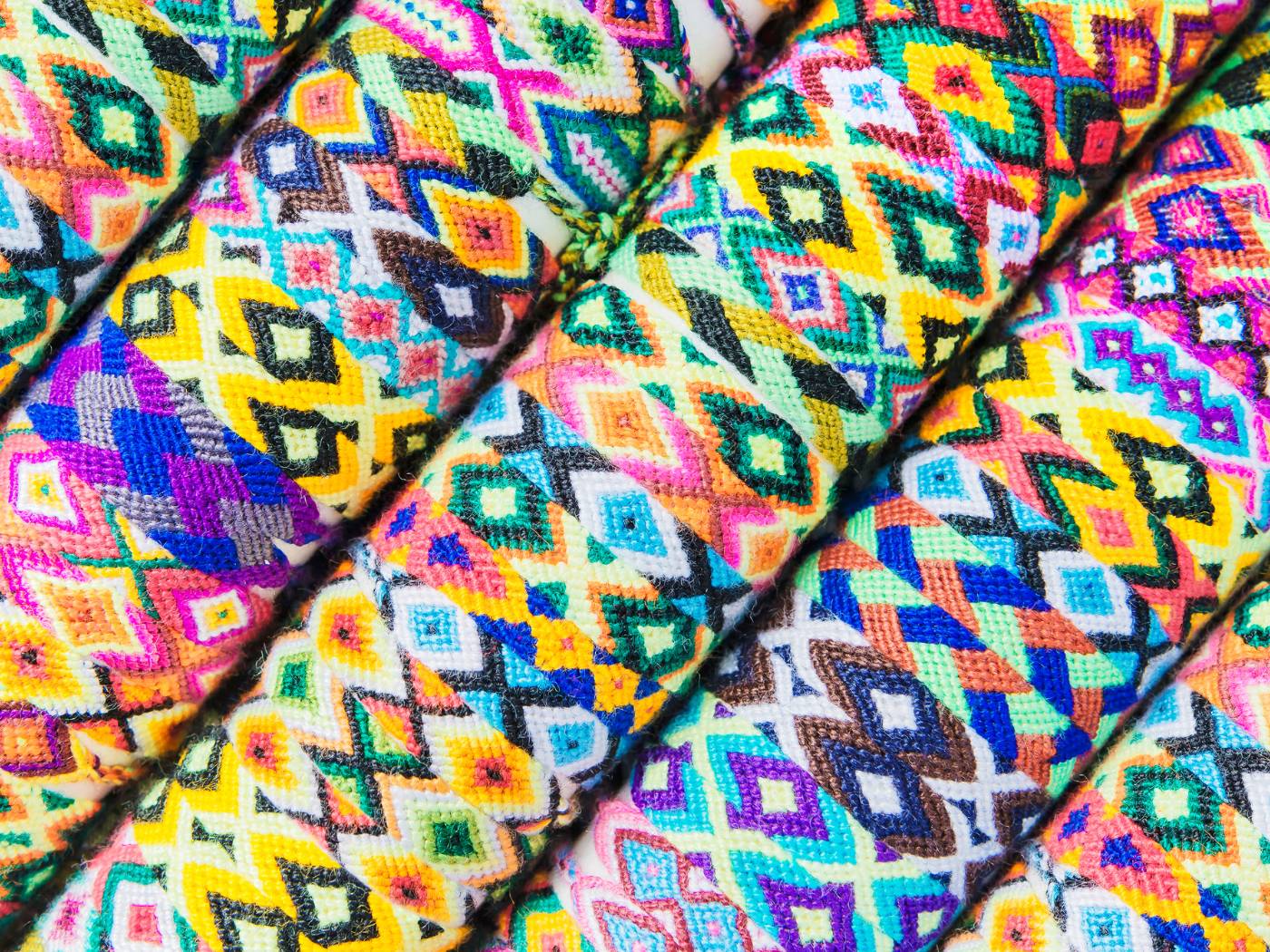From the ancient hieroglyphs etched onto the walls of Egyptian tombs to the intricate mandalas that adorn meditation spaces, protection symbols have captivated human imagination across cultures and eras. These symbols, steeped in history and meaning, transcend linguistic barriers to communicate our shared desire for safety and security. In this exploration, let's embark on a journey to uncover the profound significance and universal allure of protection symbols. So... here it is! Guardian Glyphs: Symbolism of Protection.
A Cross-Cultural Tapestry of Symbolism
Throughout history, humanity has displayed an unwavering fascination with symbols that promise protection. From amulets to talismans, these symbols are often crafted with care and intention, serving as a tangible link between the earthly and the spiritual realms. They encapsulate the age-old quest to shield ourselves from harm, ward off negative energies, and navigate the uncertainties of life.
The cross-cultural presence of protection symbols stands as a testament to their significance. In ancient Egypt, the Eye of Horus and Ankh were cherished as potent amulets that safeguarded both the living and the deceased. Norse cultures invoked the power of runes to ward off malevolent forces, while Native American tradition gifted us with dreamcatchers – intricate webs that filtered out negative dreams. The intricate patterns of Asian Yin-Yang and Bagua symbols embody balance and harmony, while the Hamsa and Evil Eye of Middle Eastern cultures repel negativity.
Safeguarding Our Shared Humanity
The allure of protection symbols isn't confined to a specific culture or era; it stems from our shared human experience. The universal desire for security and protection transcends geographical boundaries and linguistic differences. Whether carved into stone, painted onto skin, or woven into fabric, these symbols are a testament to our collective vulnerability, our aspiration to navigate life's challenges unscathed, and our innate belief in the unseen forces that can shield us.
One of the most remarkable attributes of protection symbols is their ability to communicate complex ideas without the need for spoken language. This symbolic language bridges gaps between cultures and generations, carrying with it the essence of safety, well-being, and connection. The power of a protective symbol lies not only in its visual representation but also in the emotions and beliefs it evokes.
As we delve deeper into the realm of protection symbols, we will uncover their historical roots, decode their intricate meanings, and explore their contemporary applications. We will examine how these symbols continue to find their place in modern society, adorning personal accessories, homes, and even digital avatars. Moreover, we'll explore the psychological and neuropsychological underpinnings that contribute to their efficacy.
Protection Symbols Across Time and Cultures

Throughout history, various civilizations have turned to symbols as a means of invoking protection and warding off negative energies. These ancient symbols, often deeply rooted in cultural beliefs, continue to captivate us with their enduring power. Let's take a journey back in time to explore the historical contexts of some remarkable protection symbols from around the world.
Ancient Egypt: The Eye of Horus and Ankh as Amulets
In the mystical lands of ancient Egypt, the Eye of Horus and the Ankh held profound significance as symbols of protection and life. The Eye of Horus, also known as the "all-seeing eye," represented watchfulness and protection by embodying the vigilant gaze of the falcon-headed god Horus. The Ankh, symbolizing life and eternity, was often worn as an amulet to safeguard against harm and ensure a harmonious afterlife.
Norse Runes: Warding off Malevolent Forces
The Norse people had a deep connection to the spiritual and natural realms, as reflected in their runic symbols. Runes were not only a form of writing but also a means of invoking protective energies. These symbols were believed to have the power to ward off malevolent forces, ensuring the safety and well-being of those who possessed them.
Native American Tradition: Dreamcatchers and Their Protective Role
The Native American tradition offers us the enchanting concept of dreamcatchers. These intricate webs, adorned with feathers and beads, were believed to filter out negative dreams and energies, allowing only positive ones to pass through. Dreamcatchers not only symbolized protection during sleep but also conveyed the interconnectedness of the dreamer with the spiritual realm.
Asian Cultures: Yin-Yang and Bagua Symbols for Balance and Harmony
Asian cultures have long embraced symbols that promote balance and harmony, which in turn contribute to protection. The Yin-Yang symbol represents the interplay of opposing forces – light and dark, male and female – while maintaining harmony. The Bagua, with its eight trigrams, offers protection by creating a sense of equilibrium between different aspects of life.
Middle Eastern Heritage: Hamsa and Evil Eye Wards Against Negativity
In the Middle East, the Hamsa and the Evil Eye serve as powerful protection symbols. The Hamsa, often depicted as a hand with an eye in the center, wards off evil spirits and negative energies. Meanwhile, the Evil Eye is a talismanic symbol that safeguards against jealousy and ill-wishing. These symbols reflect a deep cultural belief in the need to shield oneself from the harm that can come from envious eyes.
What Symbols Symbolizes Protection?

There are various symbols from different cultures and belief systems that symbolize protection. These symbols often carry deep meanings and are believed to offer a shield against harm and negative energies. Here are a few examples:
1. Eye of Horus (Wadjet Eye): Originating from ancient Egyptian mythology, the Eye of Horus is a powerful protective symbol. It represents the vigilant and watchful eye of the falcon god Horus, offering protection, health, and prosperity.
2. Hamsa Hand: Commonly found in Middle Eastern cultures, the Hamsa is a hand-shaped amulet that wards off evil spirits and brings good fortune. The eye in the center of the hand symbolizes protection against the Evil Eye and negativity.
3. Ankh: An ancient Egyptian symbol, the Ankh resembles a cross with a loop at the top. It signifies life and eternity, often serving as a protective amulet associated with vitality and well-being.
4. Dreamcatcher: Stemming from Native American tradition, the dreamcatcher is a circular web adorned with feathers and beads. It's believed to filter out negative dreams, allowing only positive ones to pass through, making it a symbol of protection during sleep.
5. Yin-Yang: Rooted in Chinese philosophy, the Yin-Yang symbol represents the balance between opposing forces, such as light and dark, male and female. This balance contributes to harmony and protection from extremes.
6. Runes: In Norse culture, runes were used as symbols with protective properties. Each rune held a specific meaning and energy, and they were often inscribed to guard against harm and malevolent forces.
7. Triquetra: Known as the "three-cornered" or Celtic knot symbol, the Triquetra signifies the interconnectedness of life and the eternal cycles of nature. It's often associated with protection through its representation of unity and balance.
8. Pentagram: While often associated with various meanings, the pentagram can also symbolize protection in certain contexts, especially when it is depicted with a single point facing upwards, representing the human spirit overcoming the elements.
9. Scarab Beetle: In ancient Egypt, the scarab beetle was revered as a symbol of protection, transformation, and rebirth. It was often used as an amulet to ward off evil and negative energies.
10. Bagua: From Taoist philosophy, the Bagua is an octagonal symbol representing the eight fundamental aspects of life. It's used as a protective talisman to create harmony and balance in various areas of life.
These symbols showcase the diverse ways in which cultures have expressed the concept of protection through visual representation. Each symbol carries its own unique significance, but they all share the common thread of providing a sense of security and well-being to those who embrace them.
What is the Universal Protection Symbol?
The Hamsa. Also known as the Hand of Fatima or Hand of Miriam, is a universal symbol of protection, believed to ward off evil and bring blessings, strength, and good fortune to its bearer. This ancient symbol has roots in various cultures and religions, including Judaism, Islam, Christianity, and Hinduism, and has been embraced by diverse communities around the world.
The Hamsa typically features an open hand with five fingers, often symmetrical, with an eye placed in the center of the palm. The eye, known as the "evil eye," is believed to watch over and protect against negative energy or malevolent forces. The five fingers of the hand represent different aspects, including strength, stability, and blessings, while also symbolizing the five senses and the five pillars of Islam.
In Jewish tradition, the Hamsa is associated with the biblical figure of Miriam, the sister of Moses and Aaron, who is revered for her strength, wisdom, and protective qualities. It is also linked to the hand-shaped amulets known as "kabbalah hands," which are believed to offer protection and bring good luck.
In Islamic culture, the Hamsa is called the Hand of Fatima, named after Fatima al-Zahra, the daughter of the Prophet Muhammad. It is often seen as a symbol of patience, faith, and protection, and is widely used in jewelry, home decor, and as an amulet to safeguard against the evil eye.
Across various cultures, the Hamsa is a cherished symbol that transcends religious boundaries and serves as a potent talisman for protection and blessings. It is often worn as jewelry, displayed in homes, or incorporated into artwork as a reminder of divine protection and positive energy.
In today's globalized world, the Hamsa continues to be embraced by people of different backgrounds and beliefs, symbolizing unity, peace, and the universal quest for protection and well-being. Its enduring popularity reflects its timeless significance as a symbol of hope and resilience in the face of adversity.
Modern Applications: Protection in Today's World

As the world continues to evolve, so too does the role of protection symbols in our lives. Beyond their historical significance, these symbols find new avenues of application in a modern context, offering us ways to harness their power for our well-being and resilience.
The Dynamic Duo: Protection Symbols and Crystals
Protection symbols have traversed cultures and eras, encapsulating the universal human need for safety. Crystals, on the other hand, have been revered for their unique energies and properties that resonate with different aspects of our well-being. When these two forces come together, they create a potent synergy that enhances their individual strengths.
Incorporating protection symbols and crystals into your daily life is a journey of intention, mindfulness, and empowerment. It's a reminder that the wisdom of the past can seamlessly merge with contemporary practices to create a shield that resonates with your unique needs and aspirations. As you navigate the complexities of today's world, consider this powerful partnership as a beacon of light and strength on your path to well-being.
Personal Protection: Adorning Our Lives with Symbols
Incorporating protection symbols into our personal adornments is a timeless practice that persists in the modern era. From delicate pendants to intricate tattoos, these symbols become a part of our identity, serving as a constant reminder of our quest for safety and strength. Whether worn as jewelry, etched into our skin, or woven into our clothing, these symbols forge a tangible link between our aspirations and the world around us.
Home and Space: Creating Sanctuaries of Safety
Our living spaces serve as sanctuaries where we seek refuge from the outside world. Incorporating protection symbols into our home decor allows us to infuse our environments with a sense of safety and positivity. Whether it's a dreamcatcher above the bed or an Ankh amulet on the shelf, these symbols become both functional and aesthetic elements that contribute to our overall well-being.
Psychology and Belief Behind The Symbols
The efficacy of protection symbols isn't solely rooted in mysticism; it also finds resonance in the realm of psychology and belief. This section delves into the science that underpins our understanding of how symbols influence our perceptions and emotions.
The Placebo Effect: Harnessing Belief for Safety
The placebo effect demonstrates the profound impact that belief can have on our well-being. Similarly, our faith in the power of protection symbols can shape our perception of safety and provide comfort in times of uncertainty. The symbols themselves become conduits for belief, amplifying their protective qualities in our minds.
Carl Jung's Archetypes: Unveiling the Collective Unconscious
Swiss psychiatrist Carl Jung introduced the concept of archetypes – universal symbols that reside in the collective unconscious. Protection symbols often embody archetypal qualities that tap into our shared human experiences and innate desires for security. Understanding these archetypes allows us to appreciate the deep-seated resonance that protection symbols hold within us.
Neuropsychology: Mapping the Impact of Visual Symbols
Neuropsychology sheds light on how visual symbols impact our brain functions and emotional responses. The mere sight of a protection symbol can trigger neural pathways associated with safety and positive emotions. This section delves into the intricate dance between our minds and these symbols, revealing the physiological basis for their effect on our well-being.
Conclusion
In our exploration of protection symbols, we've delved into the rich tapestry of history, culture, and belief systems that have woven these symbols into the very fabric of human existence. As we conclude this journey, we're reminded of the enduring allure and transformative potential that protection symbols offer.
Protection symbols stand as timeless beacons that bridge the gaps of time, culture, and geography. From the majestic pyramids of Egypt to the humble homes of today, the allure of these symbols transcends eras, reflecting the universal human need for safety and security. The fact that protection symbols have been cherished across civilizations highlights their unwavering relevance and the deeply rooted human desire to shield ourselves from harm.
Beyond their historical and cultural significance, protection symbols hold an inherent power to empower, comfort, and enhance our well-being. They serve as tangible reminders of our inner strength and resilience, offering solace during challenging times. These symbols become more than mere objects; they transform into conduits for positive energy, connecting us to the wisdom of the past while nurturing our present and future.













